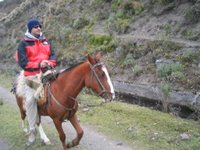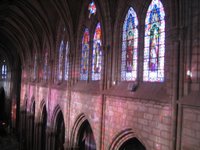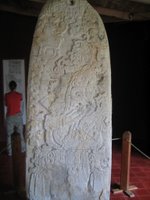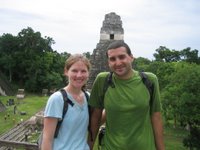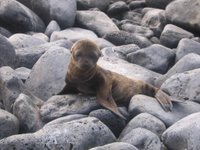
Our first image a Punta Suarez was of the sweetest little sea lion who was only about a week old. Now this is the face of the Galapagos!

We also saw very quickly many marine iguanas. The Galapagos Islands are the only place in the world that has marine iguanas. I will show you in a later post what is so special about these guys.

This next bird is another type of boobie, called the Nazca boobie. We also saw red footed boobies flying around, but never saw them perched, so no pictures.
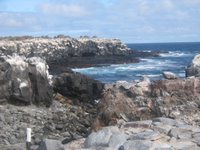
The scenery on this island was incredible with steep cliffs in the background. With the binoculars, we could see many birds flying around these cliffs and one type who lived perched right on the cliff.

This next bird is a nocturnal gull and is one of the swallowtail gulls. If you look closely, you can see the red around its eyes. They hunt only at night and this red coloring helps them to see at nighttime.


We saw more blue footed boobies and Scott got an especially good picture of one here. One thing about this boobie that I forgot to mention is that the Galapagos is the only place where these guys live. The Galapagos has many creatures like this and this is one of the things that makes the islands so magical. Not to mention how much protection there is here and how much work is being done to keep them pure. We even washed off our shoes after coming back from one island so that we would not spread seeds to another island. The picture following is of the Sally Lightfoot crab that we saw on many of the islands.
The next video on this post has a funny story to go along with it. The video is of a blow hole that we saw while walking at Punta Suarez. When a big wave would come, a huge gust of water would come out of the hole. The funny part of the story is that while we were watching, when one very big wave came, we saw a marine iguana come flying out of the hole with the water. It had its arms and legs flailing and was such a funny sight. Hopefully your imagination can replace the video of that part.










